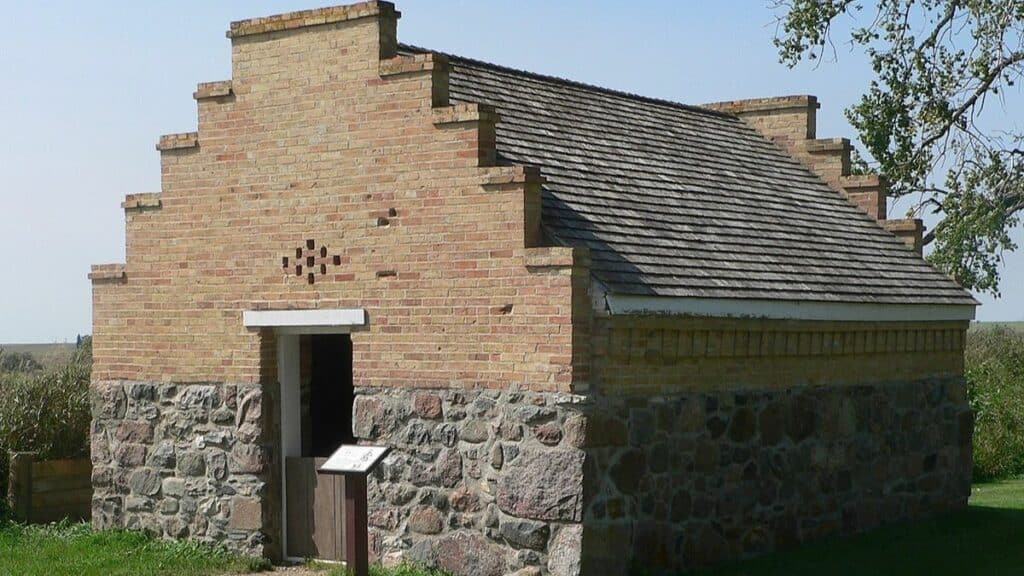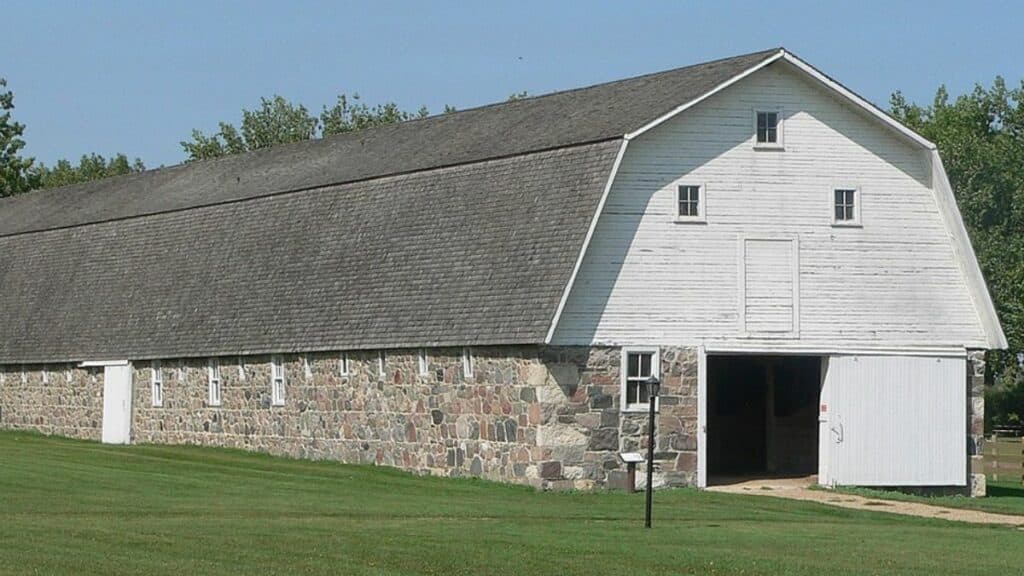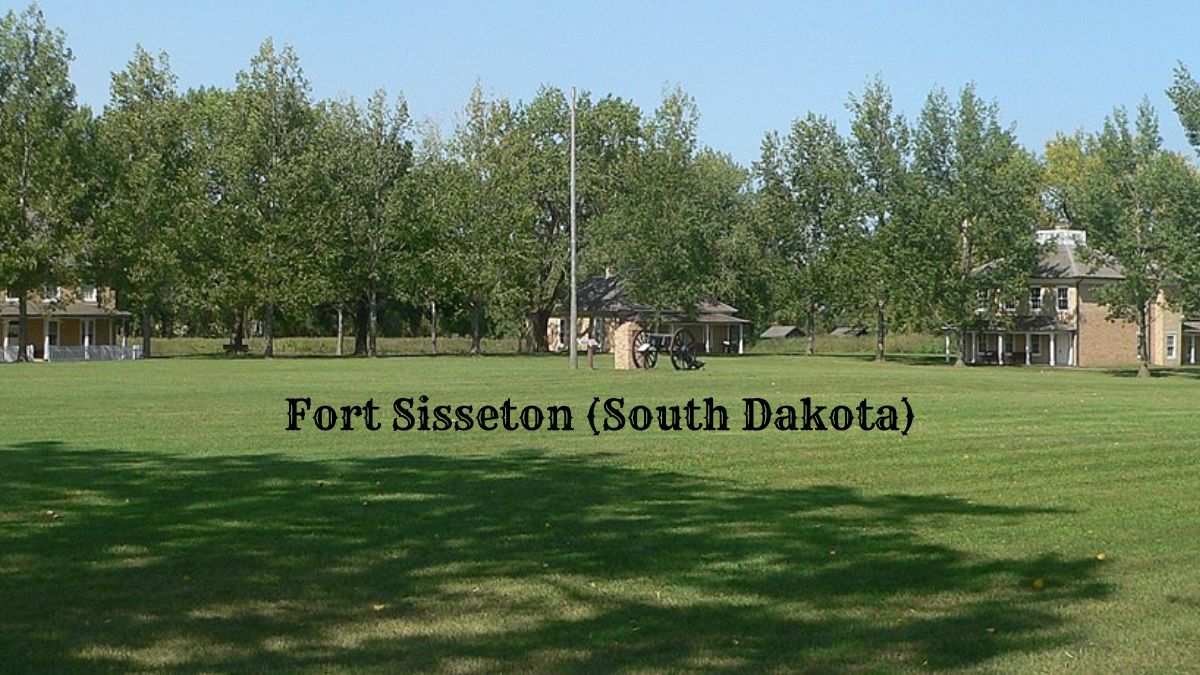Nestled in the rolling plains of South Dakota, Fort Sisseton State Park offers a captivating glimpse into the past.
Visitors can explore well-preserved buildings and learn about the fort’s role in the frontier history of the United States.
The site combines historical intrigue with natural beauty, making it a compelling destination for history enthusiasts and nature lovers.
Fort Sisseton, established in 1864, served as a military outpost during significant change and expansion. Today, it is a testament to the enduring legacy of America’s frontier days.
The park spans over 300 acres, providing various visitor activities.
Authorized by the U.S. government, the fort hosted troops throughout the Indian Wars and played a key role in regional security.
The surrounding state park has trails, picnic areas, and scenic overlooks, making it a perfect spot for educational trips and recreational outings.
History of Fort Sisseton (South Dakota)

Fort Sisseton, established in the mid-19th century, played a significant role in the Frontier Army, particularly during the Civil War.
It was initially known as Fort Wadsworth and served to safeguard settlers and maintain peace with the Sisseton Indian Tribe.
Formation and Early Days
Fort Sisseton was founded in 1864 during considerable tension in the region.
Its primary purpose was to protect settlers and manage relations with the local Sisseton Indian Tribe.
The fort’s construction involved considerable logistics and resources, as the area was isolated and inaccessible.
Initially, the fort consisted of simple log buildings and tents, but over time, it expanded into a more permanent structure.
The early residents of Fort Sisseton were soldiers from various units of the Frontier Army.
Life at the fort was challenging due to the harsh weather conditions and limited supplies. Despite these hardships, the fort quickly became an essential outpost for the military, acting as a hub for coordination and support.
Fort Wadsworth to Fort Sisseton
Named initially Fort Wadsworth, the fort was renamed Fort Sisseton in 1876.
This name change helped honor the Sisseton Indian Tribe, who resided nearby.
Fort Wadsworth’s initial mission focused on defense against potential conflicts between settlers and Native American tribes.
Over time, the fort shifted towards maintaining peace and enforcing treaties.
The evolution of the fort’s name reflected the changing relationship and dynamics between the military and the local tribes.
As Fort Sisseton, it continued to serve as a critical military installation, fostering a period of relative stability in the region.
The physical structure of the fort saw significant upgrades over the years.
Brick buildings replaced the original wooden structures, creating a more enduring and functional military base.
These improvements helped fortify the fort, making it a more formidable regional presence.
Civil War Influence
The Civil War profoundly impacted the operations and personnel at Fort Sisseton.
Many soldiers stationed at the fort were veterans of Civil War battles, bringing invaluable experience and tactical knowledge.
This background influenced military strategies and day-to-day operations at the fort.
During this period, the fort’s resources were occasionally diverted to support Civil War efforts, demonstrating its strategic importance.
The soldiers’ experiences from the war shaped their interactions with the local tribes and their approach to maintaining peace.
Additionally, the Civil War era saw an increased focus on military readiness and fortifications at Fort Sisseton.
Enhanced training and disciplined protocols became standard practice, improving the fort’s long-term effectiveness.
The legacy of these influences is evident in the fort’s historical records and the sustained peace in the region following the war.
Architectural Features

Fort Sisseton’s unique architecture is marked by its original buildings, specialized structures for military needs, and use of locally sourced materials such as lime, clay, and timber.
Original Buildings
The original buildings of Fort Sisseton were constructed using locally sourced materials like lime, clay, and timber.
These materials were readily available and allowed for quicker construction. Each structure served a distinct role in fulfilling the needs of the fort’s occupants.
The buildings include the Officers’ Quarters, Stone Barracks, and the Guard House. Together, they showcase the architectural ingenuity and practical design considerations of military installations during the 19th century.
Powder Magazine
The Powder Magazine was essential for the fort’s operational efficiency.
It was built primarily from stone and designed to safely store gunpowder and other explosives. Its thick walls mitigated the threat of accidental explosions.
Located away from the main living quarters, the Powder Magazine reflects the strategic planning that went into the fort’s layout.
Ventilation and insulation were also crucial features, ensuring the stability and safety of stored materials.
Officers’ Quarters
The Officers’ Quarters were among the most elaborately constructed buildings at the fort.
Utilizing timber for frameworks and lime-and-clay mixtures for insulation, they housed the military hierarchy in relative comfort.
These quarters often featured multiple rooms, fireplaces, and sometimes even additional amenities. The attention to detail indicates the officers’ high status and importance on their well-being.
Stone Barracks and Guard House
The Stone Barracks were robust structures intended to house enlisted soldiers.
These buildings were built from durable stone and provided resilience against harsh weather and potential attacks. Inside, they featured communal living spaces, including sleeping quarters and mess areas.
The Guard House, made from the same materials, was the nucleus for fort security.
Strategically situated, it allowed for vigilant monitoring of the fort’s perimeter. Both buildings exemplify the fort’s focus on functionality and durability in military architecture.
Explore More: 10 Historic Forts in South Dakota: A Comprehensive Guide
Fort Sisseton State Park Today
Fort Sisseton State Park is a historic site rich in cultural heritage. It offers visitors a range of modern amenities.
From educational resources at the Visitor Center to engaging recreational activities, it provides a well-rounded experience for history enthusiasts and nature lovers.
Visitor Center and Museum
The Visitor Center at Fort Sisseton State Park includes a museum that showcases the fort’s historical significance through artifacts, photographs, and exhibits.
One can explore the region’s military history with detailed displays about the soldiers’ daily lives.
A Gift Shop inside offers a variety of souvenirs and educational materials.
Interactive exhibits and knowledgeable staff enhance the visitor experience, making history accessible and engaging.
Guided Tours and Interpretive Displays
Guided tours are available, providing in-depth narratives of the site’s history.
Tour guides dress in period attire, offering insights into 19th-century life at the fort.
Interpretive displays throughout the park cover aspects such as military strategy, settler life, and interactions with native populations.
These tours and displays bring history to life, making it an educational outing for families and school groups.
Recreational Facilities
The park offers recreational facilities, including campsites, cabins, and showers.
With numerous camping options, it caters to tent campers and those preferring more comfort.
There are also trails for hiking and bird-watching and a well-stocked lake for fishing.
Picnic areas equipped with tables and grills provide spaces for gatherings, making it ideal for day trips and extended stays.
Events and Festivals
Fort Sisseton State Park hosts several themed events throughout the year.
The Fort Sisseton Historical Festival is the highlight, featuring period entertainment, reenactments, and crafts.
Visitors can participate in demonstrations of 19th-century skills and watch battle reenactments.
The Open House Weekend offers free admission, encouraging new visitors to explore the park.
These events draw crowds of history buffs and families, ensuring that Fort Sisseton’s cultural legacy continues to be celebrated.
Ecology and Environment
Fort Sisseton is situated within a unique and diverse ecological landscape. Key aspects include the Coteau des Prairies, a plateau region, and the local flora that thrives in this area.
These elements contribute to the fort’s natural defense and scenic beauty.
The Coteau des Prairies
The Coteau des Prairies is a plateau that extends across North and South Dakota, providing a unique geological feature.
This region is characterized by its elevated terrain, which rises several hundred feet above the surrounding plains, creating a natural defense barrier for Fort Sisseton.
The plateau is known for its rolling hills and numerous small lakes fed by local watersheds.
Lake City, located nearby, benefits from these water sources, making the area rich in water resources and aiding in agricultural activities.
The distinct landscape supports various ecosystems, offering habitats for different species of prairie animals and birds.
Local Flora
The flora around Fort Sisseton is diverse, comprising various species of trees, grasses, and wildflowers.
This region hosts a mix of prairie and woodland plants, providing a striking natural beauty that changes with the seasons.
Trees such as oak, ash, and cottonwood are commonly found in the area.
Prairie grasses dominate the landscape, contributing to soil stability and serving as a habitat for local wildlife.
One can find water-tolerant plants in the wetter areas near the lakes and ponds, like cattails and willows.
The vegetation here supports wildlife and is crucial in maintaining the region’s ecological balance by preventing soil erosion and contributing to the water cycle.
Cultural and Historic Significance
Fort Sisseton holds an important place in the history of the Western frontier and its connection with the Sisseton Tribe. These aspects provide deeper insight into the rich cultural and historical layers embedded within the fort.
Western Frontier Legacy
Fort Sisseton, established in 1864, was crucial to the United States’ westward expansion. It was a key military outpost during pivotal moments in American history.
Settlers and soldiers relied heavily on the fort for protection and supplies. Its strategic location helped ensure safer travel and settlement across the Northern Plains.
The architecture and layout of Fort Sisseton reflect the military strategies of the time. The state historical park now preserves these structures, giving visitors an authentic glimpse into life during that period.
Connection with the Sisseton Tribe
The fort’s relationship with the Sisseton Indian Tribe is a significant part of its history. The Sisseton Tribe originally inhabited the land where the fort was built.
The interactions between soldiers and the Sisseton people varied, including conflicts and cooperation.
This complicated history is important for understanding the broader impacts of American expansion on indigenous cultures.
Today, efforts are made to honor and educate the public about the Sisseton Tribe’s culture.
Exhibits and programs at the fort seek to present a balanced view of this shared history, recognizing both the struggles and contributions of the Sisseton people.
Logistics and Visitor Information
Fort Sisseton offers a blend of historic charm and modern conveniences. Located near Lake City, the fort provides several amenities for a comfortable visit.
Getting There: Address and Directions
Fort Sisseton is at 11907 434th Ave, Lake City, South Dakota.
Head west on Main Street from Lake City and continue onto 119th Street. Turn left onto 434th Ave, and the fort will be on your right.
For visitors coming from further away, the fort is accessible via U.S. Highway 12.
It is approximately 30 miles west of Sisseton and 60 miles north of Watertown.
Facilities and Amenities
Visitors can enjoy various camping options, including campsites and cabins.
The campgrounds are well-maintained and offer amenities such as showers and restrooms.
A small gift shop is available, offering souvenirs and refreshments.
The museum provides insights into the fort’s history with exhibits and artifacts.
Complete with tables and grills, Picnic areas are scattered throughout the site, providing ideal spots for a relaxing meal.
Guided tours are available seasonally, and booking is recommended.

Cory is a website owner and content creator who enjoys fishing, history, coin collecting, and sports, among other hobbies. He is a husband and father of four.
Romans 15:4 For whatever was written in former days was written for our instruction, that through endurance and through the encouragement of the Scriptures we might have hope.

